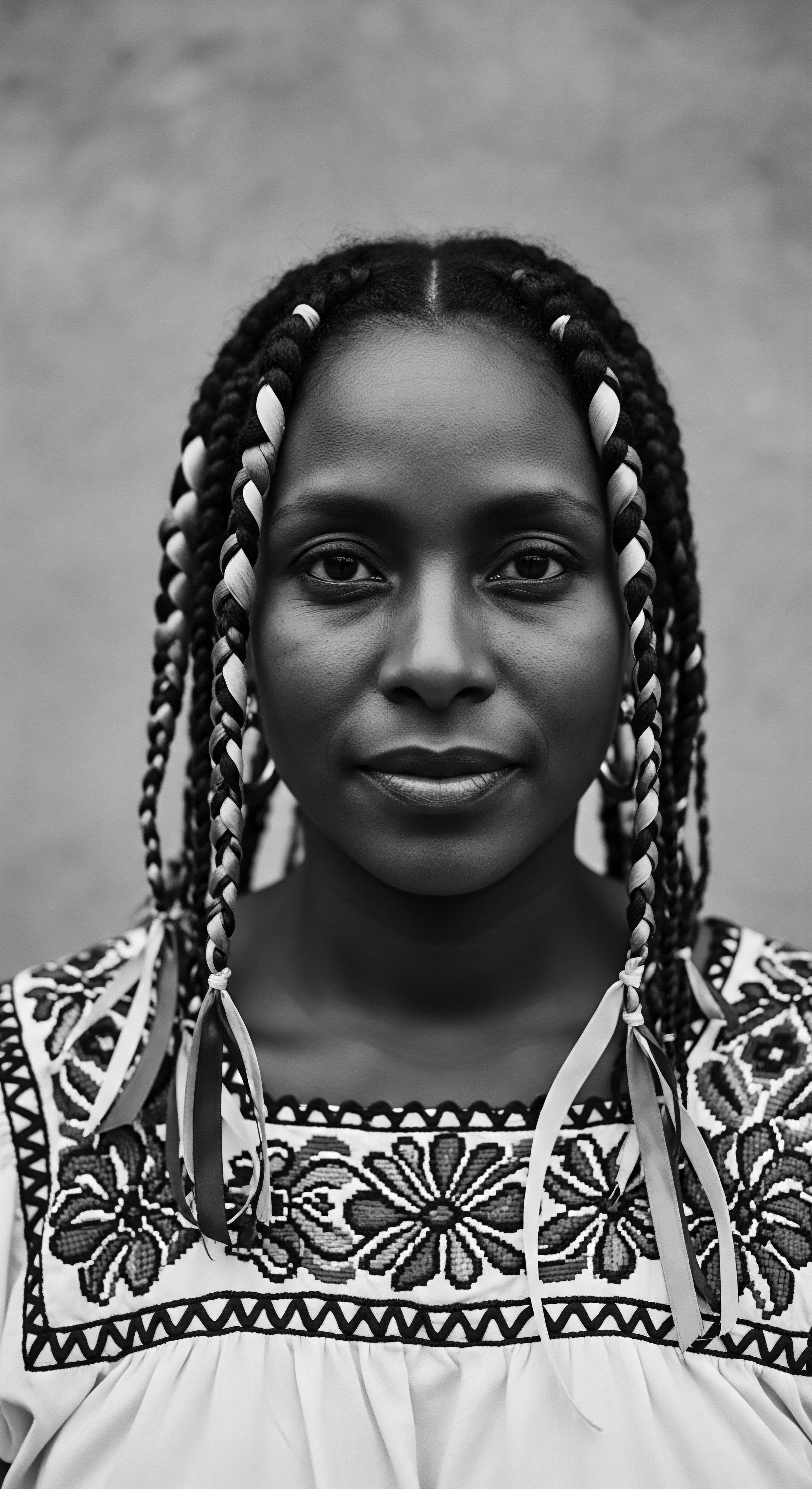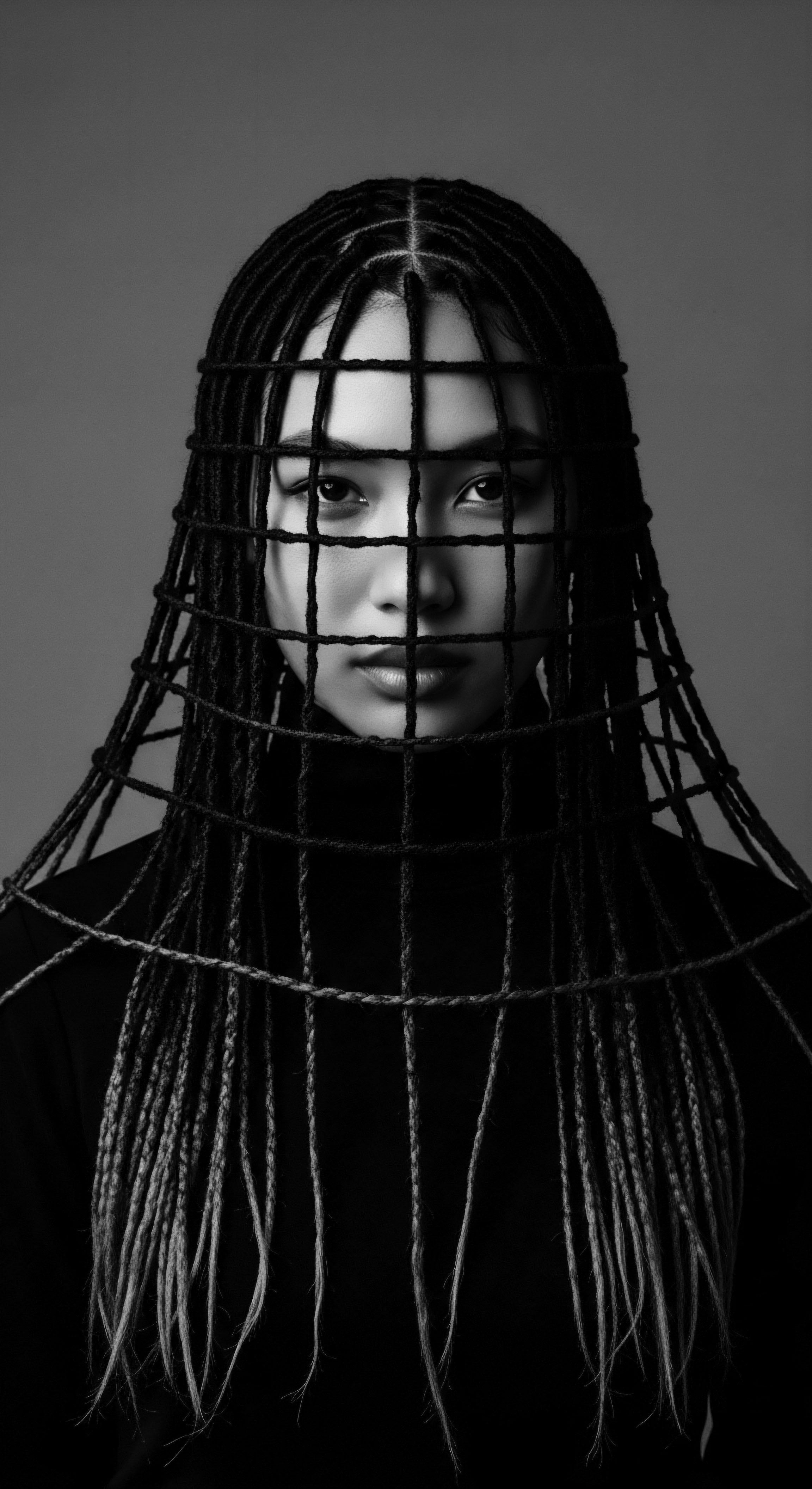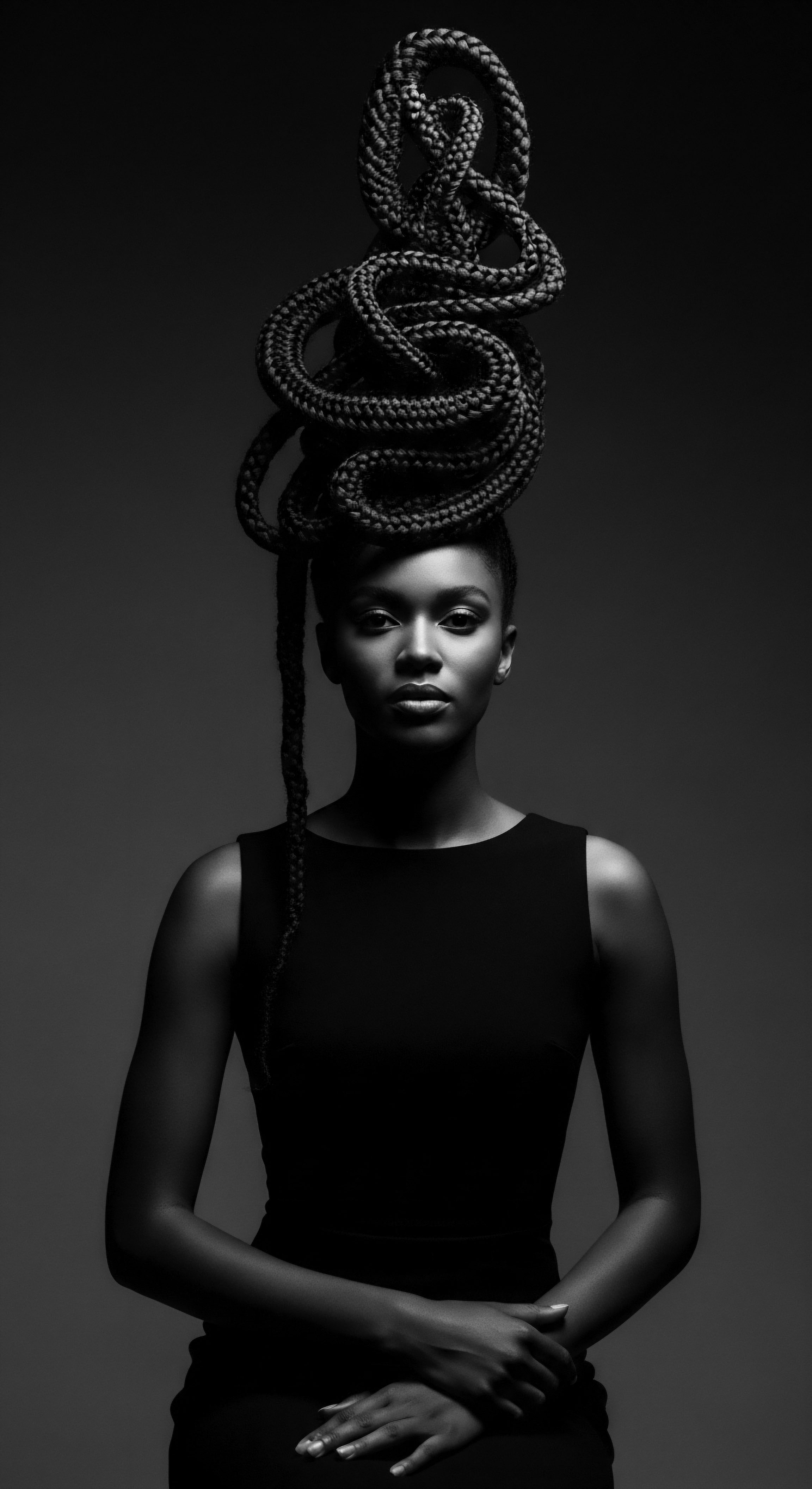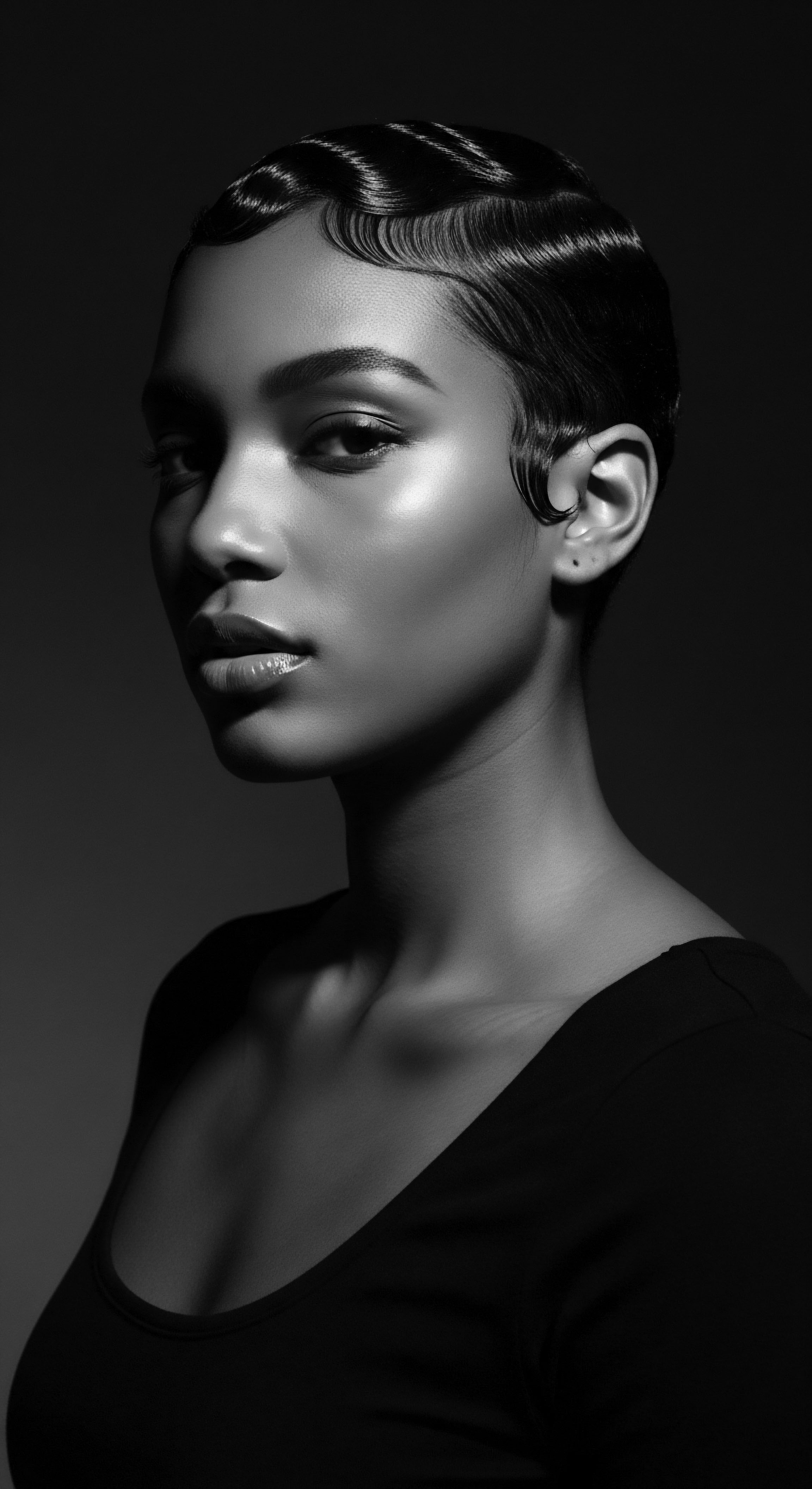
Fundamentals
The conversation surrounding human health, particularly the complexities of conditions like Breast Cancer, finds rich resonance within the expansive library of ancestral wisdom. Before we stand at the precipice of scientific understanding, contemplating cellular intricacies, it serves our spirit well to pause and consider the ancient echoes of well-being.
Breast cancer, in its most elemental sense, represents an uncontrolled and anomalous proliferation of cells within the mammary glands, a phenomenon capable of forming growths that possess the potential to spread throughout the corporeal landscape. This condition, though primarily associated with women, can manifest in men, albeit with a lesser frequency. The signs often appear as an unexpected lump or a shift in the breast’s contours, a dimpling of the skin, or a fluid discharge from the nipple, each a message from the body seeking attention. Such cellular disquiet can begin within the milk ducts or the lobules, the milk-producing glands, marking the start of a cellular journey that, if unchecked, can move beyond its initial confines.
Ancestral practices recognized the subtle shifts within the body, understanding that health was a delicate equilibrium tied to the rhythms of nature and internal harmony.
Across generations, from the sun-drenched lands of ancient Kemet to the vibrant heartlands of pre-colonial West Africa, knowledge of the body, its vulnerabilities, and its astounding capacities for healing were woven into daily life. These foundational understandings often viewed the physical form as an extension of one’s spirit and connection to the earth. Early societies approached ailments through a holistic lens, where practices intertwined with spiritual beliefs and cultural customs, aiming to address the physical, mental, and spiritual aspects of an individual’s health. The wisdom of herbs, the solace of touch, the calming cadence of meditation, and the communal strength of ceremonial rituals formed the bedrock of their wellness traditions.
While the ancients may not have named ‘Breast Cancer’ with our modern nomenclature, their profound insights into dis-ease and imbalances within the body were remarkably acute. Healing was not a detached process but a deeply personal and collective endeavor. When considering ailments akin to breast cancer, the emphasis would have often been on restoring the body’s natural equilibrium, supporting its inherent capacity to mend, and fostering environments of peace and communal care. The presence of traditional healers, revered figures in their communities, served as a conduit for this ancestral knowledge, guiding individuals through natural remedies and profound wisdom.

The Sacred Vessel and Its Tenders
In many ancestral traditions, the body itself was revered as a sacred vessel, a temporary dwelling for the spirit. Every aspect, from the flow of vital energy (often termed as ‘Qi’ in Traditional Chinese Medicine or ‘Prana’ in Ayurveda) to the resilience of the skin and hair, was understood as interconnected. Hair, in particular, carried a profound significance within African cultures, embodying a spiritual connection, social status, tribal affiliation, and a symbol of identity.
The meticulous care given to hair was a testament to this reverence, a practice often steeped in the use of natural ingredients like shea butter, coconut oil, and aloe vera, prioritizing both moisture and scalp health. These traditions teach us to approach all aspects of our physical existence with intentionality and profound respect.
The journey from elemental biology to modern understanding reveals a continuous thread of human endeavor to comprehend and address the body’s challenges. Our task now stands to bridge these realms, appreciating the enduring wisdom of the past as we navigate the complexities of present-day science. The connection to our heritage offers not only historical context but also a grounding philosophy for navigating contemporary health landscapes.

Intermediate
Moving from the foundational echoes of ancestral understanding, we now gently draw forth the tender thread of living traditions, observing how communities, particularly those of Black and mixed heritage, have navigated well-being and illness over generations. This intermediate exploration considers the evolution of care practices, recognizing that the human experience of health is deeply interwoven with cultural norms, societal pressures, and the very substances we welcome into our lives.
Across the African diaspora, the intricate web of hair care has always been more than mere aesthetics; it reflects identity, a lineage of cultural legacy, and the indomitable spirit of resistance. For centuries, hairstyles in African cultures served as markers of social standing, marital status, and even spirituality. These practices were often communal, fostering bonds as mothers, daughters, and friends gathered, braiding narratives into each strand. The early care rituals primarily leaned on natural ingredients, drawing sustenance from the earth’s bounty.
The transatlantic passage and subsequent societal impositions, however, introduced profound shifts. Enslaved Africans faced the stripping of their traditional tools and natural hair care methods. Hair, sometimes shaved or altered as a means of control, became a silent act of defiance, with braiding persisting as a quiet preservation of African identity. As time progressed, the pressure to align with Eurocentric beauty standards intensified, leading to the rise of chemical straightening methods.
The hot comb, popularized by visionaries like Madam C. J. Walker and Annie Malone in the early 20th century, offered a pathway for Black women to manage their hair in alignment with prevailing norms, concurrently fostering economic independence through their beauty empires.
The pursuit of certain beauty standards, often influenced by external societal pressures, inadvertently introduced a new array of chemical exposures into Black hair care practices.
The mid-20th century saw the widespread adoption of chemical relaxers, products designed to permanently straighten textured hair. These formulations, while offering a semblance of ease and conformity, often came with significant implications for scalp health, frequently resulting in burns and irritation. The consistent application of these chemicals, over decades, became a deeply ingrained practice for many Black women. This historical context illuminates a critical intersection ❉ the desire for social acceptance, the evolution of beauty practices, and the introduction of substances into a community’s daily rituals without full awareness of their potential long-term impacts on well-being.

The Chemicals We Carry
A concerning truth lies within the very formulations of many hair and personal care products, particularly those historically marketed to Black women. Studies have revealed that these products often contain endocrine-disrupting chemicals. Endocrine disruptors are substances that possess the capacity to interfere with the body’s intricate hormonal systems, mimicking or blocking natural hormones, which can potentially contribute to various health challenges, including reproductive disorders, early puberty, uterine fibroids, and certain cancers.
Consider the presence of Parabens and Phthalates, chemical compounds frequently detected in hair relaxers, root stimulators, and hair lotions commonly used by Black women. These substances, often serving as preservatives or plasticizers, can enter the body through the scalp, where they are absorbed into the bloodstream. Research from the Silent Spring Institute, for example, examined 18 different hair products, including hot oil treatments, anti-frizz polishes, leave-in conditioners, and relaxers, specifically chosen based on surveys of Black women’s product use.
Their investigation detected 45 different endocrine disruptors, with individual products containing anywhere from 4 to 30 of these targeted chemicals. It is noteworthy that 11 of these products contained 7 chemicals prohibited in the European Union or regulated under California’s Proposition 65.
The sheer volume and frequency of exposure become a consideration. Black women reportedly purchase and apply more hair products than other groups, with specific products like straighteners and moisturizers being more commonly used within the community, often driven by prevailing beauty norms. This frequent and often lifelong engagement with such products raises important questions regarding cumulative exposure and its potential effects on health over time. The historical trajectory of hair care in Black communities is thus not just a narrative of style and identity, but also a complex story of societal pressures intersecting with potential environmental health risks.

Academic
To approach Breast Cancer with the depth of a scholar steeped in the heritage of care requires a synthesis of rigorous scientific inquiry and a profound sensitivity to lived experiences. The meaning of breast cancer, in an academic sense, transcends its mere biological definition; it encompasses its intricate cellular pathways, its varied presentations, its socio-historical determinants, and its disparate impacts across human populations, particularly within communities shaped by unique ancestral journeys.
At its core, breast cancer represents a neoplastic disease where mammary gland cells proliferate aberrantly and without regulation. These errant cells, originating most commonly within the epithelial lining of the milk ducts (ductal carcinoma) or the milk-producing lobules (lobular carcinoma), can aggregate to form tumors. The transition from an early, localized, non-life-threatening form to an invasive state occurs when these cells transgress their original boundaries, infiltrating surrounding breast tissue. This invasion may then precede metastasis, where cancer cells detach, enter lymphatic or circulatory systems, and disseminate to distant organs, a critical point that significantly alters prognostic outcomes.

Disparities in the Shadow of Heritage
A compelling and sobering facet of breast cancer’s academic meaning lies within its epidemiology, particularly the persistent racial disparities observed globally and within the United States. While the incidence rates of breast cancer among Black women in the U.S. may be slightly lower or similar to those of White women, a stark and unacceptable divergence appears in mortality. Black women experience a significantly higher mortality rate from breast cancer; for instance, they face a 38% higher mortality rate despite a 5% lower incidence rate compared to White women, according to the American Cancer Society’s 2024-2025 report.
Furthermore, Black women are often diagnosed at younger ages and with more aggressive subtypes, such as triple-negative breast cancer (TNBC), which carries a poorer prognosis. These disparities, as scholars meticulously document, are not monolithic; they arise from a complex interplay of genetic, biological, systemic, and environmental factors.
The question then turns to understanding the multifarious contributions to this enduring gap. Beyond access to care, socioeconomic status, and diagnostic delays, research has begun to scrutinize environmental exposures, particularly those intertwined with cultural practices. Here, the ancestral practices of hair care within the Black community enter the academic discourse with profound significance.
For centuries, hair has been a canvas of identity, a cultural compass guiding Black women through periods of self-affirmation and, at times, immense pressure to conform to Eurocentric beauty ideals. This societal pressure, as articulated by scholars, led to the widespread adoption of chemical hair straightening products.
A rigorous examination of this intersection reveals an urgent area of concern. Studies have systematically identified numerous hazardous chemicals, particularly Endocrine-Disrupting Chemicals (EDCs), within hair products predominantly marketed to Black women. These EDCs, including parabens, phthalates, and formaldehyde-releasing agents, possess the capacity to interfere with the body’s natural hormonal balance. Hormones, especially estrogens, play a fundamental role in breast tissue development and, when unregulated, can contribute to breast carcinogenesis.
A notable line of inquiry, for example, is the extensive research on parabens. A study presented at ENDO 2022 by Dr. Lindsey S. Treviño and her team at City of Hope revealed that parabens, common preservatives in many hair and personal care products, caused harmful effects specifically in breast cancer cell lines derived from Black women.
The research indicated that parabens increased the growth of a Black breast cancer cell line, an effect not observed in White breast cancer cell lines at the same doses. Additionally, parabens promoted the spread of breast cancer cells, with a more pronounced effect seen in the Black breast cancer cell line. This unique finding underscores a potential differential cellular response linked to racial differences in breast cancer biology and exposure patterns.
The historical adoption of chemical hair products within Black communities, driven by societal beauty norms, has introduced potential health risks that demand careful scientific and cultural consideration.
Further supporting this critical examination, the long-running Black Women’s Health Study (BWHS), a prospective investigation of nearly 59,000 self-identified African American women, has provided invaluable data. This study, spanning over 25 years, explored the relationship between hair relaxer use and breast cancer incidence. While overall findings were largely null for moderate use, a compelling signal emerged for those with heavy, long-term exposure ❉ women who used lye-based hair relaxers at least seven times a year for 15 or more years exhibited an approximately 30 percent increased risk of estrogen receptor-positive breast cancer compared with less frequent users. This segment constituted about 20% of the study participants.
Such data compel us to reflect on the legacy of imposed beauty standards and the choices, often made under duress, that communities of color have faced. The continued availability and targeted marketing of products containing these hazardous chemicals to Black women, often with fewer paraben-free alternatives, represent an ongoing environmental injustice.
The academic lens must therefore widen to address the systemic implications. This involves scrutinizing regulatory frameworks for cosmetics, advocating for greater transparency in ingredient labeling, and supporting policy changes such as the CROWN Act, which works to eliminate hair discrimination that often fuels the desire for chemical alteration. Reclaiming ancestral wisdom concerning natural care becomes not just a matter of personal preference but a profound act of public health advocacy and cultural affirmation. The scholarly endeavor here is to disentangle the complex threads of biology, history, social context, and environmental justice to illuminate pathways toward true well-being for all, honoring the resilience inherent in textured hair heritage.
A deeper analysis of the mechanisms by which these chemicals may influence breast cancer risk reveals several pathways:
- Hormonal Disruption ❉ Many EDCs mimic endogenous estrogens, binding to estrogen receptors and potentially driving abnormal cell growth in hormone-sensitive breast tissues.
- Inflammation and Damage ❉ Chemical relaxers, particularly lye-based formulations, can cause scalp burns and irritation, providing a direct route for chemical absorption into the bloodstream. This chronic inflammation can also promote a pro-cancerous environment.
- Genetic and Epigenetic Alterations ❉ Some chemicals are genotoxic, directly damaging DNA, while others can induce epigenetic changes, altering gene expression without changing the underlying DNA sequence, potentially activating oncogenes or silencing tumor suppressor genes.
- Early Puberty ❉ Exposure to EDCs has been linked to earlier onset of puberty, which itself is an established risk factor for breast cancer, as it increases a woman’s lifetime exposure to endogenous estrogens.
The imperative for collective action remains clear, spanning multiple dimensions:
- Research and Monitoring ❉ Continuous, well-funded research is necessary to identify specific chemicals and exposure levels that pose the highest risks, focusing on diverse populations and particularly on the long-term impact of cumulative exposures.
- Regulatory Reform ❉ Stricter regulation of chemicals in personal care products, including mandatory pre-market safety assessments and comprehensive labeling requirements, stands as an urgent necessity.
- Public Awareness and Education ❉ Empowering communities with accurate information regarding potential risks associated with certain hair products, alongside the promotion of safer, traditional, and natural alternatives, fosters informed decision-making.
- Health Equity Initiatives ❉ Targeted interventions addressing systemic disparities in healthcare access, quality of care, and representation in clinical trials remain vital to improve outcomes for Black women.
| Era/Context Pre-Colonial Africa (Ancient Roots) |
| Era/Context Post-Slavery to Early 20th Century (Adaptation & Conformity) |
| Era/Context Mid-20th Century to Early 21st Century (Chemical Dominance) |
| Era/Context Present Day (Reclamation & Awareness) |
| Era/Context The journey of Black hair care reflects not only changing styles but also an ongoing dialogue between cultural identity, health, and environmental realities. This dialogue calls for a mindful return to ancestral wisdom while embracing scientific understanding for future wellness. |

Reflection on the Heritage of Breast Cancer
As we draw our exploration to a close, a gentle yet profound understanding settles within ❉ the journey of Breast Cancer, when viewed through the lens of textured hair heritage, becomes more than a medical definition. It transforms into a living narrative, a testament to resilience, adaptation, and the enduring quest for well-being within Black and mixed-race communities. The very fibers of our hair, deeply rooted in ancestral soil, carry stories of both triumph and challenge, of beauty sought and health sometimes compromised.
The echoes from the source remind us that our ancestors held a deep reverence for the body as a holistic entity, tending to its delicate balance with wisdom passed down through oral traditions and intuitive knowing. The tender thread of community care sustained generations, adapting to new lands and new trials, preserving cultural identity through the very styles woven into their hair. Now, as we stand at the precipice of the unbound helix, where science illuminates the intricate dance of cells and chemicals, we recognize that this is not a departure from ancestral wisdom, but often a scientific affirmation of its underlying principles ❉ that what we place upon our bodies holds consequence, and that true wellness demands harmony with our environment.
The conversation about Breast Cancer within textured hair heritage compels us to honor the past with clear eyes, acknowledging the complex pressures that led to certain hair practices, and the unforeseen health burdens they may have carried. It calls upon us to listen to the whispers of our grandmothers, whose hands braided our hair, and to the voices of contemporary scientists, whose work seeks to protect future generations. This is a powerful invitation to reclaim agency over our well-being, to choose practices that nourish our bodies and spirits, and to advocate for a world where beauty is never bought at the cost of health. Our hair, in its myriad textures, remains a beacon of identity, a symbol of resistance, and a sacred connection to the enduring strength of our lineage.

References
- Helm, J. et al. (2018). Hair products for Black women contain mix of hazardous ingredients. Environmental Research .
- Environmental Working Group. (2025). Higher hazards persist in personal care products marketed to Black women, report reveals.
- Bundles, A. P. (2001). On Her Own Ground ❉ The Life and Times of Madam C. J. Walker. Scribner.
- James-Todd, T. (2020). Some Black hair products may harm users’ health. Harvard T.H. Chan School of Public Health.
- Coogan, P. F. et al. (2021). Hair product use and breast cancer incidence in the Black Women’s Health Study. Carcinogenesis, 42(6), 665-674.
- Trevino, L. S. (2022). Chemicals in personal care products cause harmful effects in breast cancer cells from Black women. Presentation at ENDO 2022, Endocrine Society’s annual meeting.
- Treviño, L. S. (2022). Exposure to parabens may be the reason for higher breast cancer risk in Black women. Endocrine Society .
- Rochester Regional Health. (2022). Study ❉ Women Using Hair Relaxers Face 2x Cancer Risk.
- American Cancer Society. (2024-2025). Breast Cancer Facts and Figures .
- CDC. (2023). Disparities in Breast Cancer Deaths.
